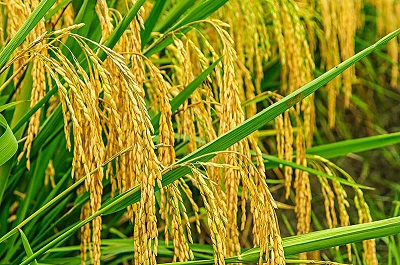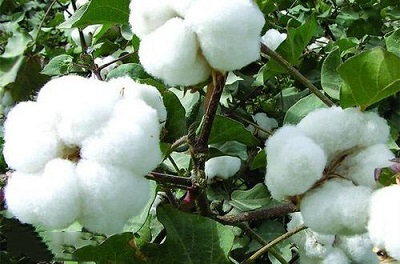In-depth Demand Report | Disassembling Growth Regulator Lawn
Nowadays it is not enough to simply manufacture growth regulator lawn based on quality and reliability. Product efficiency is added as a basic foundation for its design in SHIJIAZHUANG POMAIS TECHNOLOGY CO.,LTD. In this regard, we use the most advanced materials and other technological tools to assist its performance developments through the production process.
We prepare well for some challenges before promoting the POMAIS to the global. We clearly know that expanding internationally comes with a set of obstacles. To meet the challenges, we hire bilingual staff members who can translate for our overseas business. We research different cultural norms in the countries we plan to expand into because we learn that foreign customers' needs are probably different from those of domestic.
These years witnessed the success of POMAIS in providing on-time services for all products. Among these services, customization for growth regulator lawn is highly appraised for meeting different demands.
Plant growth regulators are
widely used in agriculture. It can regulate the growth and development
of plants and improve the growth of crops. Different plant growth
regulators have different effects.
First: promote seed germination
Some
factors may cause low germination rate or germination failure of seeds,
such as long storage time, poor storage environment, immature seeds,
etc. The use of gibberellin can promote seed germination and increase
seed germination rate. Different plant growth regulators have different
effects on different seeds.
Second: Promote the development of plant roots and plant short and strong seedlings
Growth
inhibitors belong to one type of plant growth regulators. It can
overcome the influence of environmental conditions, delay the growth of
seedlings and promote the development of the root system of the plant,
to plant dwarf seedlings. Paclobutrazol and paraquat have a good effect
on the cultivation of dwarf seedlings. Their main application methods
are spraying on the leaves and seed treatment during the seedling stage.
Third: Promote the filling of plants
The
use of plant growth regulators such as auxin, gibberellin and cytokinin
during the booting and flowering stages of grains can increase yield
and grain filling.
Fourth: Enhance the lodging resistance of plants
High-stemmed
crops may fall in later stages. The use of plant growth regulators such
as paclobutrazol, uniconazole, and calcium regulator can increase the
stem thickness of plants, control plant height, and prevent plant
lodging.
Fifth: Prevent plants from falling flowers and fruits to promote fruit setting
The
flowers and fruits of cotton, beans and melons have a great
relationship with the nutrient hormones in the body. Use auxins and
growth inhibitors to improve its growth status and balance hormones,
thereby preventing flower and fruit falling, and increasing fruit
setting rate.
Sixth: accelerate plant maturity
Ethephon can promote fruit ripening. Different plants need different plant growth regulators to promote fruit ripening.
But it should be noted that:
First:
Do not increase the dosage at will. Otherwise, its growth may be
inhibited, and in severe cases, the leaves may become deformed, dry and
fall off, and the entire plant may die.
Second: Can not mix at will.
After carefully reading the instructions for use and testing, we can
determine whether they can be mixed.
Third: Use the method properly. Follow the instructions to dissolve the medicine.
Features
1. Inhibit vegetative growth, promote reproductive growth, promote lateral bud growth and rooting, and keep stems and leaves dark green.
2. Control flowering time, promote flower bud differentiation and increase fruit setting rate.
3. Promote the accumulation of sugar and dry matter, promote fruit color change and improve storage tolerance.
4. It has the effect of shortening plant nodes and resisting lodging.
5. Reduce herbicide damage, improve plant resistance to cold, drought and disease, and ultimately achieve the purpose of increasing yield and improving quality.
Application
Prohexadione calcium can not only reduce the height of rice plant, shorten the length of plant internodes, but also increase the number of grains in the panicle at a lower dose, with a significant increase in yield and no residue.
Prohexadione calcium acts on wheat to dwarf plant height, reduce internode length, increase stem thickness, increase ear length, 1000-grain weight and increase yield.
Prohexadione calcium at a suitable concentration has a certain regulatory effect on improving the accumulation and distribution of cotton biomass, increasing yield and improving quality.
Prohexadione calcium has a dwarfing effect on ornamental plants such as chrysanthemum and rose, and can also adjust the color of plants.
Title: Plant Growth Regulators Category: Pesticide Sources: China Plantation Grand View · Pesticide Rolls Plant growth regulators are a class of substances that have similar physiological and biological effects as plant hormones.
It has been found that substances regulating plant growth and development are amine fresh ester (DA-6), chlorpyrifos, sodium nitrophenolate, auxin, gibberellin, ethylene, cytokinin, abscisic acid, brassinolide. Salicylic acid, jasmonic acid, paclobutrazol and polyamines, etc., and used as plant growth regulators in agricultural production are mainly in the top nine categories.
1 Wide range of applications, many applications. Plant growth regulators can be applied to almost all high and low plants in the crop industry, such as field crops, vegetables, fruit trees, flowers, trees, kelp, seaweed, edible fungi, etc., and regulate the photosynthesis, respiration, Material absorption and operation, signal transduction, stomatal opening and closing, osmotic adjustment, transpiration and other physiological processes regulate the growth and development of plants, improve the interaction between plants and the environment, enhance the resilience of crops, and increase crop yields. Improve the quality of agricultural products, so that the expression of crop agronomic traits develops in the direction of people's needs.
2 Small dosage, fast speed, high efficiency, less residual toxicity, most crops only need to be sprayed once every one season.
3 Can regulate the external traits of plants and internal physiological processes.
4 Targeted and professional. It can solve problems that are difficult to solve by other means, such as forming seedless fruits, controlling windy winds, controlling plant type, promoting rooting of cuttings, ripening and coloring of fruits, inhibiting growth of axillary buds, and promoting cotton leaf detachment.
5 The use effect of plant growth regulators is affected by many factors, and it is difficult to achieve the best. The climatic conditions, the time of application, the amount of drug used, the method of application, the site of application, and the absorption, operation, integration and metabolism of the crop itself will affect its effects.
A. Strengthen fertilizer and water management.
1. Reasonable fertilization. Mainly based on organic fertilizer, supplemented by chemical fertilizer; heavy application of base fertilizer, appropriate amount of topdressing; focus on the application of nitrogen, phosphorus, potassium fertilizer and the use of micro-fertilizer; no fruit-sensitive fertilizer, regulate growth.
2. Scientific management of water. The period of maintaining the fruit and improving the fruit setting rate is when the water demand of the fruit tree is high. If the soil is short of water, it should be watered in time, and combined with fertilization. Do not pour water at noon on hot days, and should be done in the evening or in the morning.
B. Strengthen tree management.
1. Thinning flowers and thin fruit. Fruit trees with too much flower and fruit are thinned and thinned, and the amount of flowers and fruits should be determined according to the specific tree potential, and the fruits, deformed fruits and overly dense fruits should be removed.
2. Pressure control summer shoots. The fruit can be used to control the rapid growth of summer shoots by water spray or adopting new shoots to promote reproductive growth and increase production and income.
3. Reasonable pruning. Pruning can reduce shading and enhance photosynthesis. It is usually combined after fruit picking or thinning and thinning, cutting off weak branches, dead branches, cross branches, diseased branches, short and strong branches to reach expanded fruits. the goal of.
C. Strengthen pest control.
1. Seize the prevention period. According to the law of occurrence and development of pests and diseases, seize the timely use of drugs in key periods of prevention and control to reduce pests and diseases.
2. Rational use of pesticides. The first is to choose low-toxic and high-efficiency pollution-free pesticides; the second is to prepare the concentration according to the instructions for pesticide use, and the concentration should not be too large; the third is to pay attention to the prevention and treatment methods, and the insecticide should not be applied during the flowering period, and the spraying should not be carried out in rainy or high temperature. Fruit tree sensitive pesticides.


